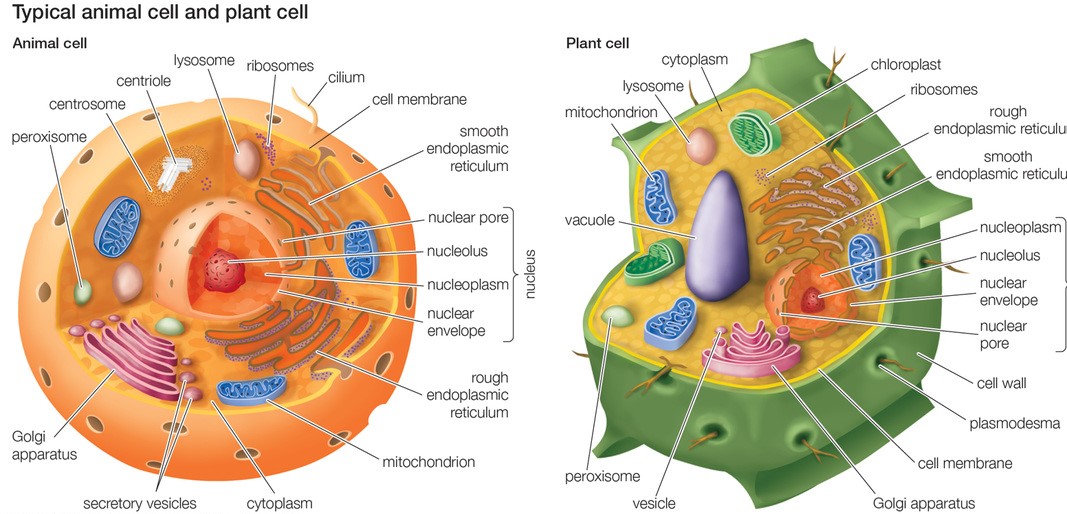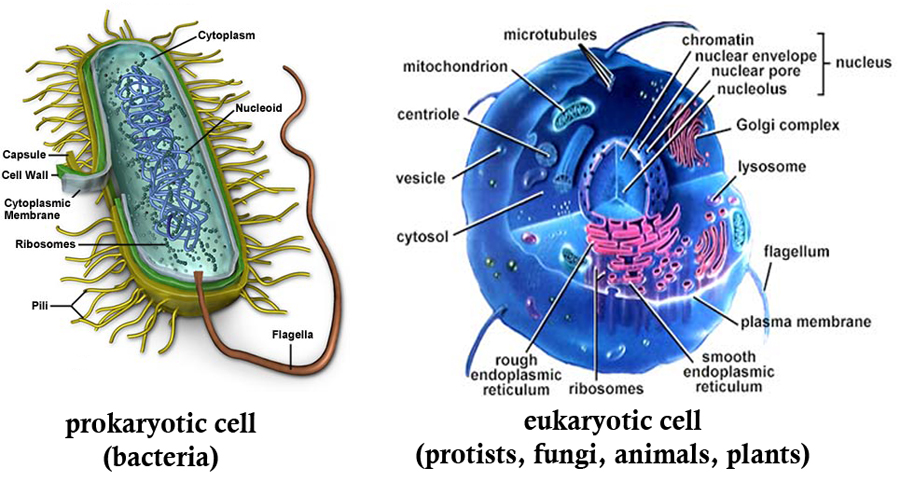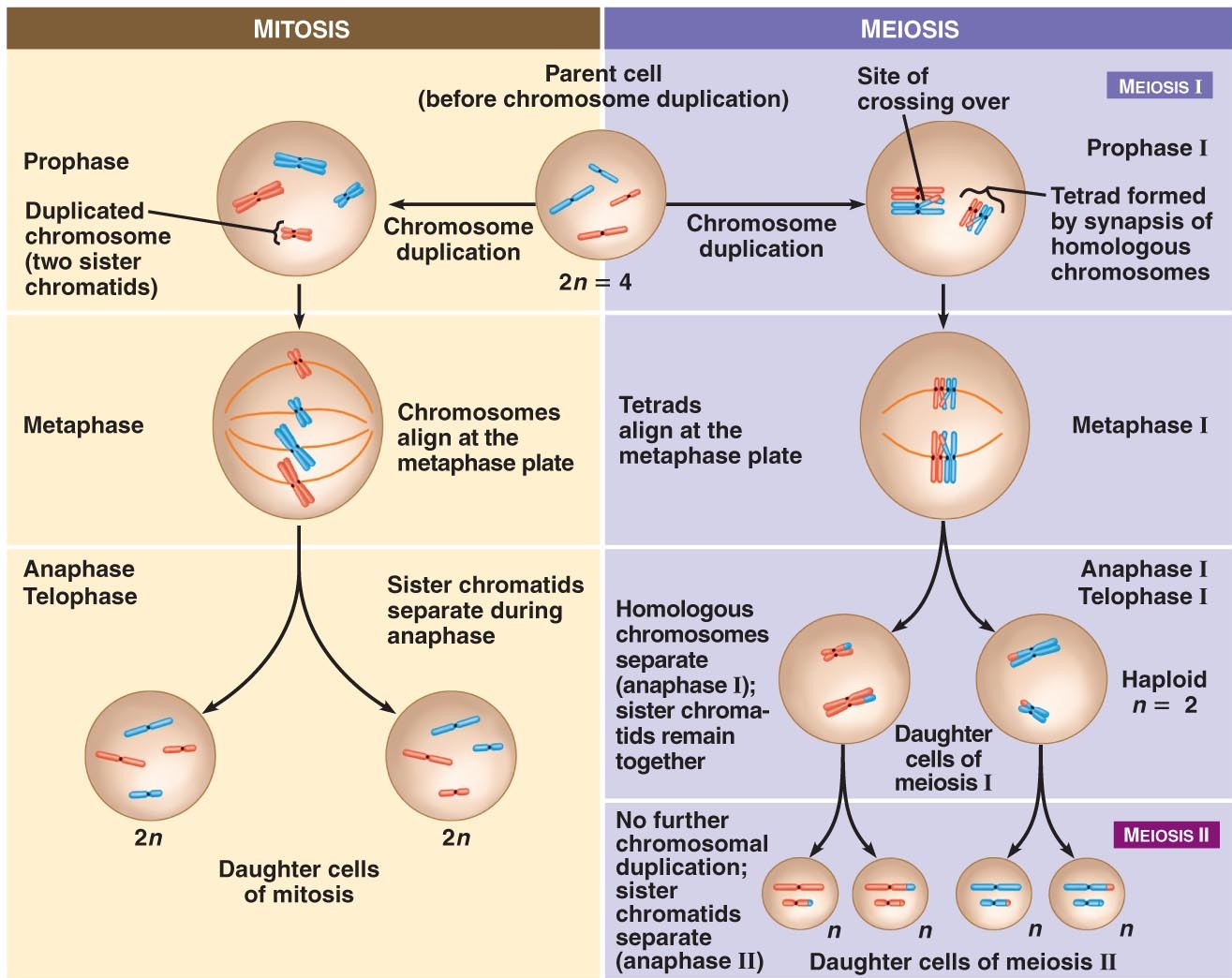

by Maria Torres Martínez
1. The Cell Theory:
The first observations of cells date back to 1665, when Robert Hooke, using a very simple microscope handmade by himself, observed a thin slice of cork.
He discovered on it geometrical tiny pores that he called “cells”. However, Hooke did not know their real structure or function. In 1674, Anthony van Leeuwenhoek observed and described for the very first time living cells.
These cells were microorganisms (bacteria and protozoa) that he had discovered in pond’s water, and that he called “animalcules”.
Since the XIX century, the improvement of microscopes and the development of staining techniques, allowed to observe the internal structures of cells.
Robert Brown discovered in 1831 a corpuscle inside the plant cells that he called “nucleus”. Seven years later, in 1838, Joahnnes Purkinje introduced the term “protoplasm” to refer to the liquid which fills the cells. Matthias Schleiden and Theodor Schwann, independently, came to the conclusion that all plants and animals were formed by cells. Finally in 1855, Rudolf Virchow, established that every cell came from a previous cell. With the postulates of Schleiden and Schwann, the development of the Cell Theory started. Today we can summarise it into the following points:
- Cell is the vital unit of living beings. The cell is the simplest and smallest living being.
- Cell is the structural unit of living beings. All living beings are made by one or more cells.
- Cell is the functional unit of living beings. The cell is able to perform all metabolic processes that allow it stays alive, that is, carry out the vital functions.
- Cell is the genetic unit of living beings. Every cell comes from other pre-existing cell, from which it inherits its genetic material.
2. Types of cells.
Living beings can have two different types of cell organization: prokaryotic and eukaryotic.

- Prokariotic cells:
Ø They do not have a nucleus. Their genetic material is inside the cytoplasm without a membrane that separates it from the rest of its content. In addition, they do not have organelles, except ribosomes.
These cells are more primitive, simpler and smaller (from 1µm to 10 µm) than eukaryote cells and they are exclusive of bacteria (Monera Kingdom).
- Eukayotic cells.
Ø They have a true nucleus that means that their genetic material is surrounded by a membrane that separates it from the rest of the cytoplasm. They have numerous organelles.
These cells are more evolved, more complex and bigger (from 10µm to 100 µm) than prokaryote cells. The rest of living beings (Protoctists, Fungi, Plants and Animals Kingdoms) have this type of cells.
There is two types of eukaryotic cells:
- Eukaryotic plant cell: They are the cells of plants and algae. They have some exclusive organelles: chloroplasts and cellular plant wall. This is a rigid external cover of cellulose, which protects the cell and gives it a polyhedral shape. In addition, their vacuoles are large and little numerous. Usually there is only one.
- Eukaryotic animal cell: They are the cells of animals and protozoa. They also have some exclusive organelles: the centrosome and the cilia and flagella. They have a flexible external cover called glycocalyx. In contrast they have many little vacuoles.

3. Mitosis and Meiosis
Learning about mitosis and meiosis in biology class can be challenging for students. Understanding how mitosis and meiosis work is essential for understanding independent assortment, genetics, and evolution so I spend a lot of time on this unit. I use a few different methods for helping students understand and really grasp the material.
1. I show a lot of animations: Mitosis is dynamic process. Chromosomes are moving in all moment It is really important for them to see the process in action. There are loads of great animations online for teachers.
o Stages of Mitosis
o How Meiosis Works
o Independent Assortment (Meiosis Orientation of Chromosomes)
o Stages of Meiosis Virtual Cell: Mitosis

2. A teacher at a school I used to work at does a really cool project during this unit. We will work making student groups create stop motion animation videos of either mitosis or meiosis. Students are allowed to use any materials they want and the video has to have pictures.
in progess...
© Copyleft 2016, Content and Language Integrated Learning and ICT Group